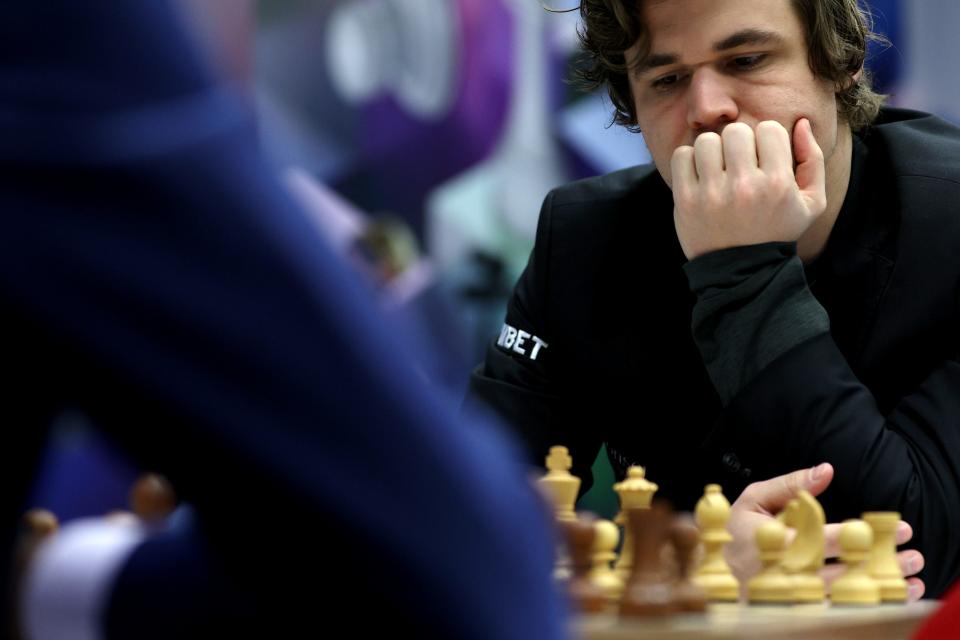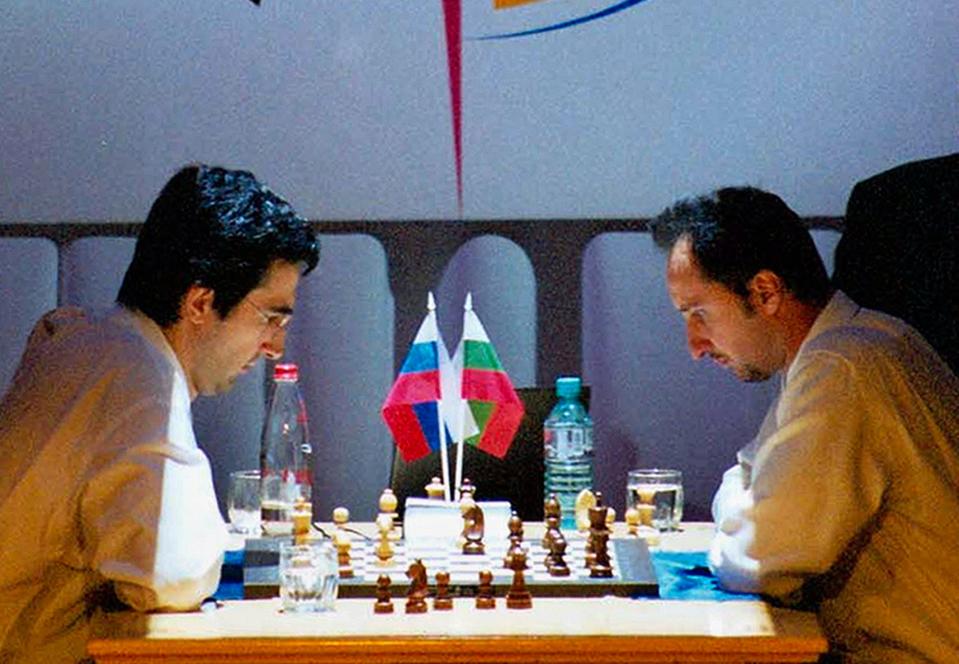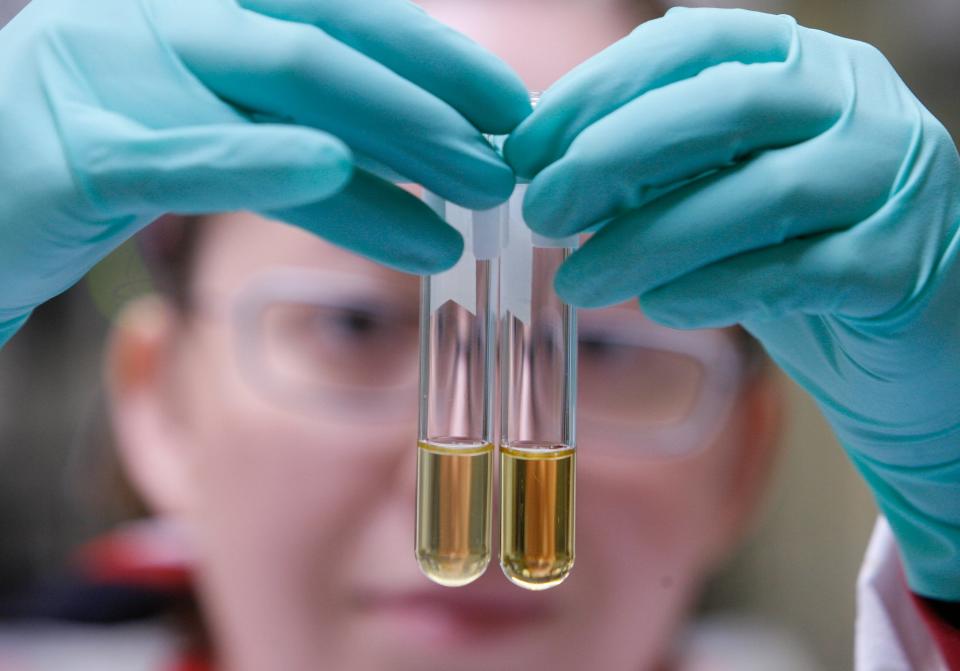From chess to baseball, technology fuels 'never-ending arms race' in sports cheating

They call him a “chess detective.”
For more than a decade now, University at Buffalo computer science professor Kenneth Regan has been one of the world's foremost experts in a niche subject: The detection of chess cheating. He spends much of his time monitoring games at top-level tournaments and identifying potential cheats, rooting out deceit with the help of what he describes as a “fairly garden-variety predictive analytic model” that compares the moves of a player to those suggested by chess-playing computers.
Regan acknowledges that, without those computers, known as chess engines, his model would not work.
Of course, without those same engines, many players would struggle to cheat in the first place.
“It is true that I am fighting fire with fire,” Regan concludes.
It's a familiar refrain across the world of sports. As cheaters and dopers employ new forms of technology in their schemes, looking for innovative ways to gain an advantage and hide their misdeeds, anti-cheating authorities like Regan often use the same tools to catch or thwart them.

In elite distance running, electronic chips in runners' bibs can detect unusual changes in their pace or, in some cases, whether they attempt to cut the course. In Major League Baseball, officials recently introduced a wireless communication system called PitchCom as a potential antidote to the sign-stealing scandal carried out by the Houston Astros in 2017, when they won the World Series. And in Olympic sports, science has become an invaluable weapon wielded by dopers and anti-doping authorities, trying to stay one step ahead of one another.
“It’s like an arms race,” University of Colorado professor Roger Pielke Jr. said. “A never-ending arms race.”
In his 2016 book titled “The Edge: The War against Cheating and Corruption in the Cutthroat World of Elite Sports,” Pielke writes that we are collectively “overdue to open a discussion of technology in sport.” He argues that technology is not only used to cheat and catch cheaters but also, perhaps more importantly, to establish rules around what, exactly, constitutes cheating in the first place.
Do carbon-plated running shoes and high-tech swimsuits give their athletes an unfair advantage? What about an MMA fighter shaving down the bones in his face, to reduce the chances that he might get cut and bleed when hit?
Perhaps most importantly: What new forms of cheating might we see next?
'Toiletgate' to checkmate
Regan first earned his reputation as a chess detective not by catching an accused cheater, but rather by helping to absolve one.
At the 2006 world chess championships, Bulgarian player Veselin Topalov indirectly accused his opponent, Vladimir Kramnik, of accessing a chess engine while he was in the bathroom. In a news release, Topalov's team noted that many of the Russian grandmaster's moves corresponded with the computer's suggestions, while calling attention to the frequency with which Kramnik used the bathroom during their match.
The saga became aptly known as “Toiletgate.”

Kramnik denied the allegations and ultimately wound up winning the match. Meanwhile, Regan, who was an accomplished chess player in his youth, decided to crunch the data using his model. He found that in many of the situations in Kramnik’s games, there was really only one strong move to choose from.
“When the best move is singular … chances are a strong player will find the same move as a computer,” Regan explained.
Though sometimes not considered a sport in the traditional sense, chess has had its fair share of cheating scandals − almost all of them involving the assistance of chess engines. Perhaps the most infamous one to date occurred just last year.
After a shocking loss at a top-tier tournament in St. Louis, five-time world champion Magnus Carlsen refused to play American grandmaster Hans Niemann and later accused him of cheating "more – and more recently – than he has publicly admitted." Niemann acknowledged cheating in online games as a teen but denied cheating at in-person tournaments. He later sued the Norwegian, among others, for defamation; the lawsuit was dismissed in June.
In the past decade alone, at least four elite players have been caught consulting a chess engine on a cell phone hidden in the bathroom at a tournament.
In a handful of other cases, players like Borislav Ivanov have been accused of receiving advice on a move via a wireless device. In Ivanov's case, the allegation was that he had a buzzer in his shoe. (Regan's model determined the odds of him playing the moves he played in a 2012 tournament without computer help were "almost a million-to-one." Ivanov denied cheating but was disqualified from a separate tournament after refusing to take off his shoes. )
“I categorically will not take off my shoes,” he told the tournament director, according to another player who told chess website ChessBase that he witnessed the incident. “My socks smell.”
'It's a real cat-and-mouse game'
Regan estimates there are between five and 10 cheating cases per year in upper-level amateur and professional chess tournaments. Unfortunately, he says, this is nothing new. When he was growing up, cheaters would secretively consult chess books rather than computers. Only the technology has changed.
Over the past century, the devices and techniques at the center of other sports cheating schemes have ranged from the incredibly simple to the highly technical and sophisticated.
At the 1904 Summer Olympics in St. Louis, for example, it was the automobile that Fred Lorz used to win the marathon, riding comfortably for 11 of the race's 26.2 miles.
In more recent history, it was the center-field cameras that the Houston Astros used to zoom in on opposing catchers' signs, enabling their hitters to know ahead of time which pitches they were about to face.
In between, there was the electrically-modified fencing épée that pentathlete Boris Onischenko used at the 1976 Olympics. The capsule of fake blood that Tom Williams popped in his mouth, to feign injury at a critical juncture in a rugby match. Tiny electric motors hidden in the seat tubes of bicycles. A powder sprinkled into a boxer's gloves that hardens when wet, turning sweating fists into anvils. And a long list of technological advances used by dopers to avoid detection − from micro-dosing to more comical attempts, like the cyclist who tried to pass a drug test by running someone else's urine from a condom under his armpit through a tube in his sleeve. (That cyclist, Michel Pollentier, was quickly caught.)
"It’s a real cat-and-mouse game," said Matt Fedoruk, the chief science officer at the U.S. Anti-Doping Agency. "We're always, through sound and evidence-based scientific research, trying to develop and refine (our) techniques in order to stay ahead of the dopers."
Science has perhaps played a more significant role in the doping world than any other cheating arena in sports. Fedoruk pointed to the use and detection of erythropoietin, more commonly known as EPO, as just one example.
A hormone that ramps up the production of red blood cells in the body, EPO has been banned in sports since the early 1990s, according to the World Anti-Doping Agency. But before the 2000 Sydney Olympics, anti-doping authorities didn't have a test that could detect it. Several high-profile cyclists, including Lance Armstrong, wound up testing positive for the substance over the next dozen years.
And yet as more athletes were caught with EPO, new synthetic versions of the hormone began to appear. Fedoruk said they're now seeing third- and fourth-generation EPO molecules, which are structured differently than their predecessors and therefore require different types of tests.
"As the drugs evolve, the tests have to evolve as well," he said. "Because it’s not a one-test-fits-all type of approach."

Perhaps this is why, in a 2022 survey conducted by USADA, 53% of the nearly 1,000 U.S. athletes questioned said they believe the science used to detect performance-enhancing substances is behind or far behind athletes' ability to dodge a positive test.
"If you’re going to be cheating in doping, you always have the upper hand," Pielke added.
"This is the double-edged sword, right? You come up with a better method of detecting, and the people who hold that knowledge also hold the key to knowing how to be a better doper."
What comes next?
Some advances in sports technology simply raise questions of cheating, rather than accusations of it.
In 2008, several swimming world records fell in quick succession after Speedo unveiled its new LZR swimsuit, which was designed to reduce resistance as swimmers traveled through the water. The suits were later banned by World Aquatics, the international federation that oversees the sport. Track and field dealt with a similar controversy in 2017, following the release of Nike's Vaporfly shoes − the first of what are now colloquially known as "super shoes."
The future of sports cheating is likely to be riddled with more cases like these, in which athletes find and benefit from supercharged equipment before governing bodies are able to react. But experts like Fedoruk and Pielke believe the next major frontier is gene doping, or human enhancement more broadly.
"The questions of doping are going to seem quaint compared to the ability to do human enhancement going forward," Pielke predicted.
It is already commonplace for athletes to repair or replace parts of their bodies to improve their performance. Just think of every baseball player who has gotten Lasik eye surgery in hopes of picking up a curveball more easily, or MMA fighters like Nick Diaz, who turned to plastic surgery in an attempt to ensure they won't bleed when hit.
But gene doping goes a step further. The idea is that an athlete could hypothetically alter their genes to produce more of a hormone that would help them in competition, or less of one that would hinder them.
Fedoruk said that, while nobody has been caught attempting this kind of gene doping, it has "become a threat." A synthetic type of EPO, for example, can be found in testing, but EPO produced by a manipulated gene cannot.
"The idea would be: Could this be undetectable?" he asked.
It is likely only a matter of time before an athlete, or their accomplice, is able to use new scientific advances to turn the idea of gene doping into reality. In the meantime, Fedoruk and his colleagues will continue to use their own scientific tools to ward it off. Like everywhere else in sports, the proverbial cat-and-mouse game continues.
"So really," Pielke said, "science and technology are both the problem and the solution."
Contact Tom Schad at tschad@usatoday.com or on social media @Tom_Schad.
This article originally appeared on USA TODAY: Sports cheating fueled by technology, from chess to baseball

